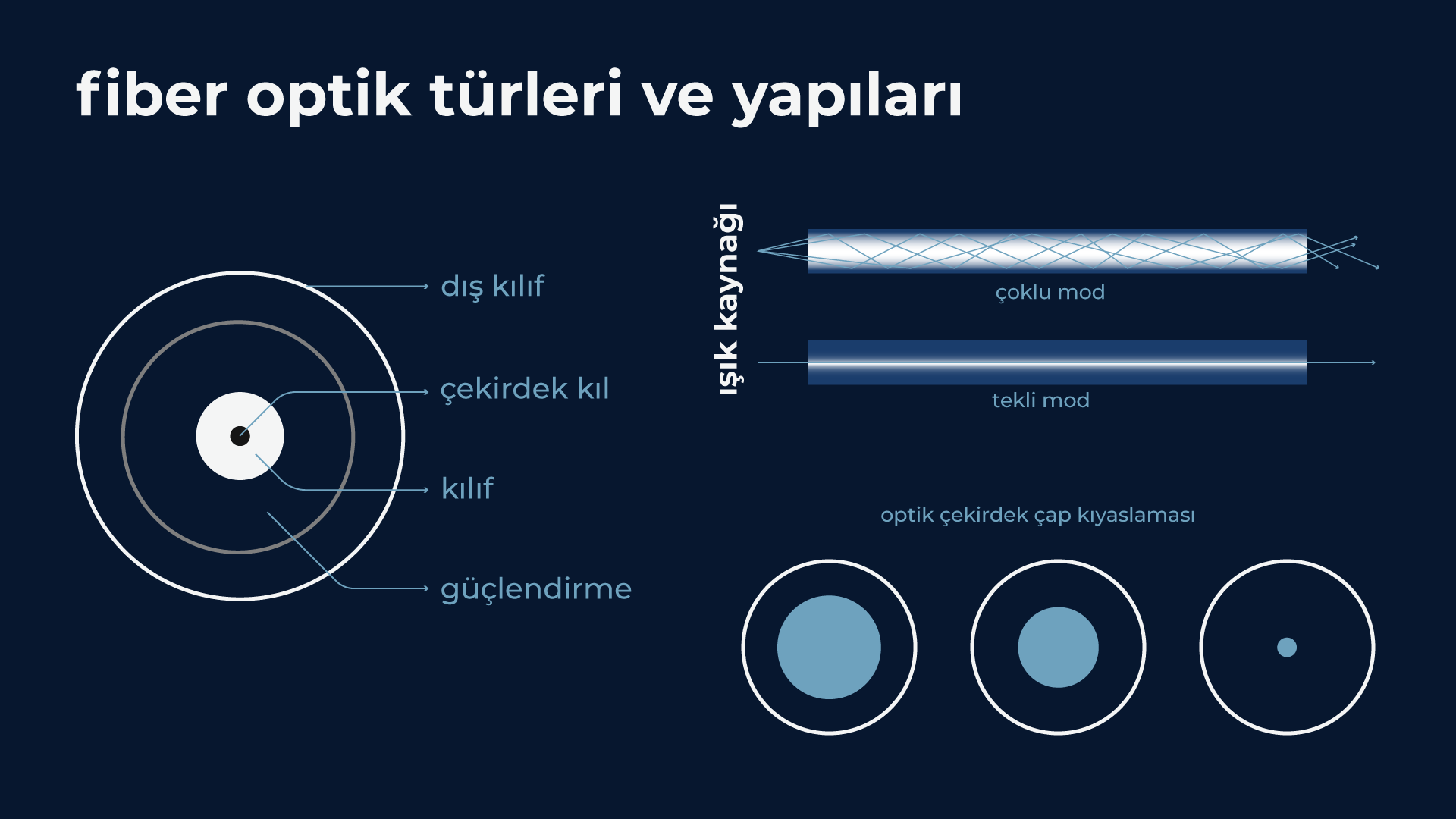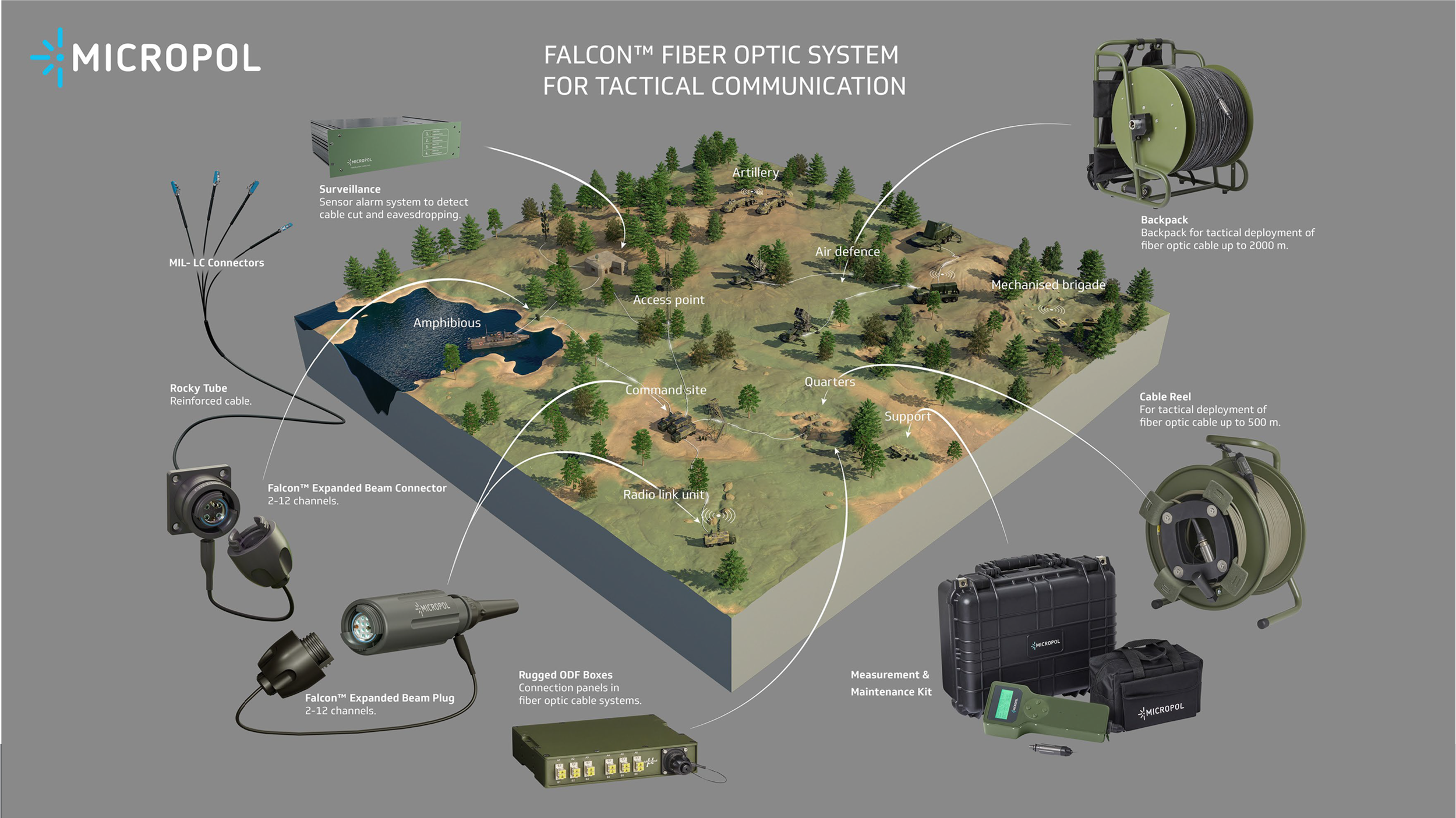Digital communication traditionally relies on binary codes, where copper wires transmit signals as electrical pulses: a pulse means “1” and no pulse means “0.”
The growing demand for faster and more efficient data transmission in the modern world led to a breakthrough in 1965. Charles Kao and George Hockham discovered a better way to transmit signals using light through glass fiber.
This glass structure, known as the optical core, is used to carry light pulses generated by lasers. The light reflects off the edges of the optical core as it travels.
Therefore, the diameter of the core determines the distance the signal can travel.
Fiber optic connections use light pulses instead of electrical pulses from copper wires; light on means “1,” light off means “0.” This type of connection has several advantages:
- Faster data transmission over longer distances
- Higher bandwidth capacity to carry more data simultaneously
- Immunity to electromagnetic interference, offering greater reliability
- Ease of installation and maintenance with lightweight cables
There are two main types of fiber optic connections:
- Single-mode fiber (SMF), designed for long-distance communication with a narrow optical core, uses a single light path or mode.
- Multi-mode fiber (MMF), with a wider optical core, is used for shorter distances and can carry multiple light modes simultaneously.

One of the obstacles to this technology is the presence of dust or other particles in harsh outdoor environments, which can cause light loss, reduced bandwidth, and intermittent transmission.
Expanded beams solve this problem by using two lenses to avoid physical contact. The first lens at the fiber’s tip expands and collimates the light, making it parallel.
The second lens refocuses the light onto the receiving fiber, restoring the original beam size. This is ensured by lenses with a fixed or variable refractive index, which guarantees the light remains collimated.
The fact that the lenses do not make contact also helps maintain data transmission in case of exposure to dirt.
The expanded beam offers various advantages based on its operating principle:
- Its rugged design withstands harsh conditions, making it ideal for military applications.
- It reduces the impact of small particles, making cleaning and maintenance easier.
- With its expanded beam size, it is suitable for outdoor installations and minimizes alignment and contamination issues.
- Its structure provides vibration resistance and reduces mechanical wear, extending its lifespan.
As fiber optic networks have become an essential part of tactical communication and critical data transmission, ensuring the reliability and strength of these networks in all environments is crucial.
Micropol’s expanded beam connectors, designed for durability and precision, play a significant role in maintaining the integrity of fiber optic networks in harsh conditions.
FALCON
Micropol designed the FALCON series to transfer data at 40 Gbit/s over a single channel. With this design, the FALCON series has become the best-performing expanded beam connector in the market.
PROCON
Building on the proven success of FALCON, the PROCON series has been designed with equivalent quality and durability. Capable of transferring data at 10 Gbit/s over a single channel, the PROCON series offers all the necessary features for demanding applications at a competitive price.

For more information and Micropol product catalog:
https://www.saca.com.tr/vendor/micropol-fiberoptic-ab/